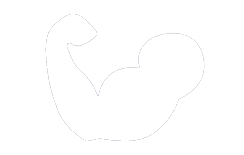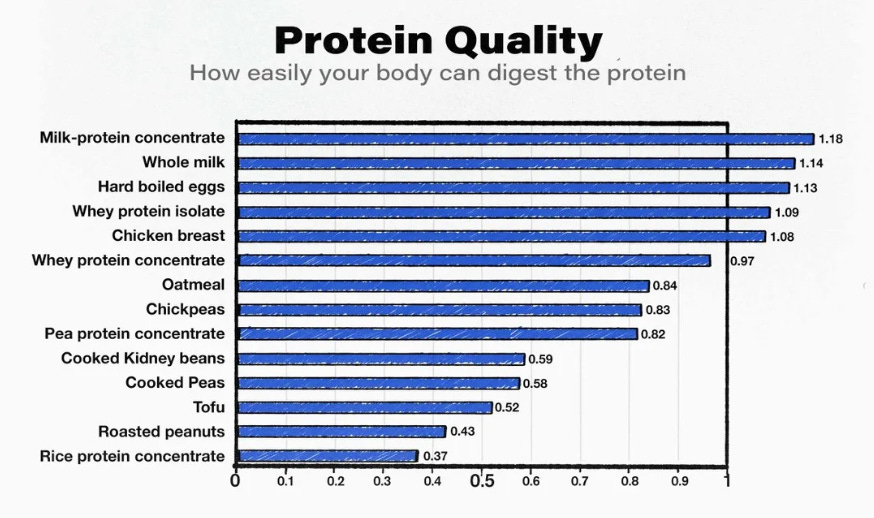· weightlifting · 13 min read
Pull Ups VS Push Ups: The Ultimate Showdown
Are you looking to enhance your strength and build muscle, but unsure whether pull-ups or push-ups are the best exercise for you?
Are you looking to enhance your strength and build muscle, but unsure whether pull-ups or push-ups are the best exercise for you? In this article, we will explore the differences between these two popular bodyweight exercises. From the muscles worked to the difficulty level, we will break down which exercise may be more beneficial for your fitness goals.
Whether you are a beginner or looking to boost your weight loss journey, we have got you covered with all the information you need to make an informed decision. So, let’s dive in and discover which exercise is right for you!
What Are Pull Ups and Push Ups?
Pull ups and push ups are bodyweight exercises that target the upper body muscles and are commonly used in fitness routines.
Pull-ups primarily work the back muscles, specifically the latissimus dorsi and biceps, while push-ups target the chest, shoulders, and triceps. These exercises are effective in developing strength, endurance, and muscle definition in the upper body.
Variations of pull-ups include wide grip, narrow grip, and chin-ups, providing different ways to target specific muscles. Push-up variations like incline, decline, and diamond push-ups offer varying intensities and focus on different muscle groups.
Incorporating pull-ups and push-ups into your workout routine can significantly enhance your upper body strength and overall fitness levels.
What Are the Differences Between Pull Ups and Push Ups?
Pull ups and push ups differ in the primary muscles targeted, variations available, and the level of difficulty they offer in an upper body workout.
- Pull ups primarily target the back muscles, particularly the latissimus dorsi, while engaging the biceps and forearms.
- On the other hand, push ups primarily work the chest, shoulders, and triceps.
Pull ups commonly require a horizontal bar or a sturdy overhead beam for execution, while push ups can be done on the floor with no equipment necessary. Variations such as wide grip, close grip, and chin-ups exist for pull ups, offering a range of challenges to target different muscle groups and intensities. Push ups also have variations like diamond push ups and decline push ups to adjust difficulty levels.
Both exercises are excellent for building upper body strength and muscle development, complementing each other in a well-rounded workout routine.
Muscles Worked
Pull ups primarily target the back muscles, biceps, and forearms, while push ups engage the chest, shoulders, triceps, and core muscles.
- During pull-ups, the latissimus dorsi, or lats, are a key muscle group activated, providing the pulling strength as you lift your body weight. The biceps brachii and brachialis muscles in the arms are also heavily engaged. Incorporating different grip variations like wide grip or chin-ups can shift the emphasis within these muscle groups.
- On the other hand, push-ups not only work the pectoral muscles in the chest but also stress the deltoids in the shoulders and triceps in the arms. Engaging the core in both exercises is essential for stability and overall upper body strength.
Equipment
Pull ups typically require a pull-up bar or a sturdy overhead beam, whereas push ups can be performed on the floor with no additional equipment.
When it comes to calisthenics workouts, having the right equipment can make a significant difference in your training routine. For pull ups, a doorway pull-up bar or a free-standing pull-up station can be excellent options for home workouts. Similarly, for push ups, investing in push-up handles or parallettes can help to alleviate wrist strain and allow for a deeper range of motion during the exercise. These simple additions to your home gym setup can help you perform variations like wide grip pull ups, close grip pull ups, decline push ups, and incline push ups to target different muscle groups effectively.
Difficulty Level
Pull ups are generally considered more challenging due to the requirement of lifting the entire body weight, while push ups offer a scalable progression suitable for all fitness levels.
While both exercises are effective in building upper body strength and improving overall fitness, beginners may find push ups more accessible as they can be performed on knees or against an inclined surface to reduce the load.
For those looking to advance their performance in pull ups, utilizing resistance bands for assistance or focusing on negative repetitions can help in building the necessary strength. As individuals progress, variations like wide grip pull ups and diamond push ups can add another layer of challenge to their routine, leading to continuous improvement in strength and stamina.
Range of Motion
Pull ups involve a full range of motion, focusing on grip strength and targeting the back and arm muscles, while push ups have a limited range but engage multiple muscle groups through variations in hand placement.
- During pull-ups, the range of motion required is extensive as one pulls their body up towards the bar, engaging the latissimus dorsi, biceps, and forearms. Proper form, such as maintaining a straight posture and controlled movement, is crucial to prevent strain.
- Conversely, push-ups, with their limited range, activate the chest, triceps, and shoulders. Techniques like diamond push-ups or elevated feet variations increase the intensity, amplifying muscle engagement. Paying attention to hand positioning and body alignment enhances the effectiveness of both exercises for optimal results.
Which One is Better for Building Muscle?
When it comes to building muscle, pull ups are excellent for developing upper body strength and muscle mass, while push ups provide a total body workout that aids in muscle definition and endurance.
Pull ups primarily target the muscles in the back, arms, and shoulders, engaging a wide range of muscle groups simultaneously which enhances overall muscle activation and promotes strength gains.
On the other hand, push ups are great for engaging the chest, triceps, and core muscles, contributing to improved muscle balance and stability.
Both exercises can be adjusted to different variations to challenge the muscles further, resulting in increased muscle development and better overall fitness results.
Pull Ups for Upper Body Strength
Pull ups are highly effective for building upper body strength, particularly targeting the back muscles, biceps, and overall arm strength.
When performing pull-ups, the primary muscle groups engaged include the latissimus dorsi in the back, and the biceps and forearms in the arms. To maximize gains, focus on maintaining proper form throughout the exercise, ensuring a full range of motion. Keep your core engaged and avoid swinging to isolate and fully engage the targeted muscles.
Variations such as wide grip pull-ups can intensify the workout for the biceps, while close grip pull-ups emphasize the triceps for a well-rounded arm workout. Incorporating these variations into your routine adds variety and challenges your muscles for continuous growth.
Push Ups for Total Body Workout
Push ups offer a comprehensive total body workout, engaging the chest, shoulders, triceps, and core muscles for overall muscle development.
Incorporating push ups into your workout routine not only strengthens and tones the major muscle groups, such as the deltoids, pectoralis major, and triceps, but also helps improve overall fitness levels.
By adjusting your hand placement, you can target specific areas more intensely. For example, bringing your hands closer together will increase the emphasis on the chest muscles, while widening them can engage the shoulder muscles more.
Focusing on maintaining a plank position throughout the movement enhances core stability, benefiting posture and overall body strength.
Which One is Better for Weight Loss?
For weight loss, pull-ups are effective in building muscle mass and boosting metabolism, while push-ups aid in calorie burn and overall fat loss.
Pull-ups, a compound exercise that engages multiple muscle groups, not only help in strengthening the upper body but also have a significant impact on increasing muscle mass. As muscle tissue is metabolically active, the more muscle mass you have, the higher your metabolism tends to be, leading to more efficient calorie burning even at rest.
On the other hand, push-ups target the chest, shoulders, and triceps, and the dynamic nature of this exercise results in a substantial amount of calories burned, ultimately contributing to fat loss when combined with a balanced diet and regular exercise routine.
Pull Ups for Building Muscle Mass
Pull ups are beneficial for building muscle mass, improving metabolism, and enhancing overall stamina and endurance.
These versatile exercises target various muscle groups, including the back, arms, shoulders, and core. By engaging multiple muscle groups simultaneously, pull-ups promote balanced muscle development and strength. The compound nature of pull-ups also helps increase calorie burn and improve metabolism, making them a valuable addition to any workout routine focused on weight management and muscle toning.
The challenge of performing pull-ups can enhance endurance and overall physical performance over time, contributing to a healthier and stronger physique.
Push Ups for Boosting Metabolism
Push ups help boost metabolism, aid in weight loss through calorie burn, and improve endurance levels for better overall fitness.
They are particularly effective in building upper body strength and engaging multiple muscle groups simultaneously, making them a cornerstone exercise in calisthenics routines. Incorporating push ups into a regular workout regimen not only helps in shedding excess pounds by increasing calorie expenditure but also enhances cardiovascular health and stamina.
To maximize their metabolic benefits, it is recommended to gradually increase the number of push ups performed and combine them with other strength-training exercises for a well-rounded approach to weight management and improved physical performance.
Which One is Better for Beginners?
For beginners, push ups offer modified versions that cater to varying fitness levels, while pull ups have assisted versions using bands or equipment for support.
- When starting with push ups, focusing on proper form is crucial to avoid strain on the shoulders and wrists. Beginners can begin with incline push ups using a raised surface for support and gradually progress to standard push ups.
- Pull ups can be challenging due to the upper body strength required, so assisted pull ups with resistance bands or a pull-up assist machine can help in building that strength. Emphasizing correct technique is essential to prevent injury and maximize the benefits of these bodyweight exercises.
Push Ups for Modified Versions
Push ups can be adapted for beginners through modified versions that focus on proper form, technique, and common mistakes to avoid.
One effective modified push up variation for beginners is the knee push up, where you lower yourself to the ground with your knees touching the floor, still maintaining a straight line from shoulders to knees.
Another beginner-friendly option is incline push ups, utilizing an elevated surface like a bench or table to reduce the intensity while ensuring correct alignment.
Emphasizing proper hand placement, shoulder positioning, and engaging core muscles can enhance the effectiveness of these modified variations. Progression is key for beginners, starting with foundational modifications and gradually moving towards standard push ups to build strength and stability.
Pull Ups for Assisted Versions
Pull ups can be adapted for beginners using assisted versions that focus on improving grip strength, maintaining proper posture, and achieving muscle balance.
Assisted pull up variations for beginners include using resistance bands for support or utilizing an assisted pull up machine to gradually build upper body strength. Emphasizing correct grip technique helps target key muscles in the back, arms, and shoulders, aiding in efficient execution.
Ensuring proper posture during each rep not only enhances effectiveness but also reduces the risk of injury. Muscle balance is crucial for overall development, so incorporating different grip widths and hand placements can help achieve balanced strength across various target areas.
Gradually increasing intensity and setting achievable goals are essential for steady progress in mastering pull ups.
How Many Reps of Pull Ups and Push Ups Should You Do?
The number of reps for pull-ups and push-ups varies based on fitness goals, with lower reps for strength building and higher reps for muscle endurance.
- For those aiming to build strength, focusing on a rep range of 5-8 repetitions with more sets can be beneficial. This intensity helps to target muscle fibers for strength gains.
- On the other hand, individuals looking to improve endurance can aim for higher rep ranges of 12-15 or more. It is crucial to maintain proper form throughout each repetition.
When it comes to frequency, incorporating pull-ups and push-ups 2-3 times a week spaced out evenly allows for optimal recovery. Progression plays a key role in both strength and endurance training, gradually increasing the number of repetitions or sets as your body adapts.
Rep Range for Strength Building
To focus on strength building, aim for lower reps (4-6) and multiple sets of pull ups and push ups, ensuring muscle balance and optimal challenge.
Engaging the core during pull-ups and push-ups is crucial to maintain proper form and stability, which aids in maximizing the workout benefits for the arm and shoulder muscles.
Implementing rest intervals of around 1-2 minutes between sets allows for adequate recovery while keeping the intensity high.
For a well-rounded approach, alternating between pull-ups and push-ups can help prevent overuse injuries and ensure that all muscle groups are being targeted effectively.
Rep Range for Muscle Endurance
For muscle endurance, higher reps (12-15) and moderate sets of pull-ups and push-ups can help improve stamina and endurance levels over time.
Maintaining proper posture and focusing on controlled movements during these exercises can enhance the engagement of different muscle groups, particularly targeting the triceps and core. By incorporating breathing techniques such as inhaling during the eccentric phase and exhaling during the concentric phase, individuals can optimize their performance and sustain endurance.
Gradually increasing the repetitions allows for incremental progress and prevents overexertion, leading to gradual but steady improvements in muscle endurance and overall strength.
Can You Do Both Pull Ups and Push Ups in the Same Workout?
Combining pull ups and push ups in the same workout routine can create a balanced upper body session that targets various muscle groups for overall strength and body composition improvement.
Pull ups primarily target the back, shoulders, and arms, while push ups engage the chest, triceps, and shoulders. By incorporating both exercises, you ensure a comprehensive upper body workout that promotes muscle balance and functional strength. This combination also aids in improving core stability as these exercises require engagement of the abdominal muscles for proper form. By alternating between pull ups and push ups, you can effectively work different muscle groups without overloading any one area, contributing to a well-rounded fitness routine tailored to your specific goals.
Frequently Asked Questions
What are the main differences between pull ups and push ups?
Pull ups and push ups are both popular bodyweight exercises, but they target different muscle groups. Pull ups primarily work the muscles in your back and arms, while push ups primarily target your chest, shoulders, and triceps.
Which muscles do pull ups work and which muscles do push ups work?
Pull ups primarily target the latissimus dorsi, biceps, and forearms, while push ups primarily target the pectoral muscles, deltoids, and triceps. However, both exercises also engage other muscles for stabilization and support.
Which exercise is better for building upper body strength, pull ups or push ups?
Both pull ups and push ups are great for building upper body strength, but pull ups tend to be more challenging and require more strength since you are pulling your entire body weight against gravity. Push ups can be modified to make them easier or more difficult, depending on your fitness level.
Can pull ups and push ups help with weight loss?
While both exercises primarily focus on building strength, they can also aid in weight loss. Pull ups and push ups are compound movements that engage multiple muscle groups, which can help increase your metabolism and burn calories.
Do pull ups and push ups have any variations?
Yes, there are many variations and progressions of pull ups and push ups that can target different muscle groups and increase the difficulty level. Some examples include wide grip pull ups, diamond push ups, and one-arm pull ups.
Is one exercise better than the other, or should I do both pull ups and push ups?
Both pull ups and push ups have their own unique benefits and can be incorporated into a well-rounded fitness routine. It’s best to include a variety of exercises that target different muscle groups for overall strength and muscle balance.






